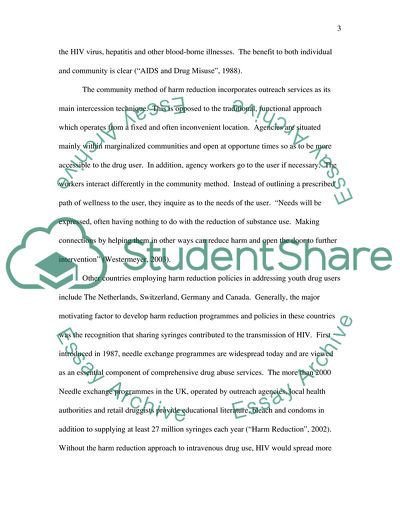Cite this document
(“Can harm reduction strategies provide a viable basis for youth and Essay”, n.d.)
Can harm reduction strategies provide a viable basis for youth and Essay. Retrieved from https://studentshare.org/miscellaneous/1540607-can-harm-reduction-strategies-provide-a-viable-basis-for-youth-and-community-work-practice-in-marginalized-communities-with-significant-drug-problems
Can harm reduction strategies provide a viable basis for youth and Essay. Retrieved from https://studentshare.org/miscellaneous/1540607-can-harm-reduction-strategies-provide-a-viable-basis-for-youth-and-community-work-practice-in-marginalized-communities-with-significant-drug-problems
(Can Harm Reduction Strategies Provide a Viable Basis for Youth and Essay)
Can Harm Reduction Strategies Provide a Viable Basis for Youth and Essay. https://studentshare.org/miscellaneous/1540607-can-harm-reduction-strategies-provide-a-viable-basis-for-youth-and-community-work-practice-in-marginalized-communities-with-significant-drug-problems.
Can Harm Reduction Strategies Provide a Viable Basis for Youth and Essay. https://studentshare.org/miscellaneous/1540607-can-harm-reduction-strategies-provide-a-viable-basis-for-youth-and-community-work-practice-in-marginalized-communities-with-significant-drug-problems.
“Can Harm Reduction Strategies Provide a Viable Basis for Youth and Essay”, n.d. https://studentshare.org/miscellaneous/1540607-can-harm-reduction-strategies-provide-a-viable-basis-for-youth-and-community-work-practice-in-marginalized-communities-with-significant-drug-problems.


